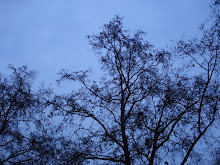


Auroral mechanism
Auroras are now known to be caused by the collision of charged particles (e.g. electrons), found in the magnetosphere, with atoms in the Earth's upper atmosphere (at altitudes above 80 km). These charged particles are typically energized to levels between 1 thousand and 15 thousand electronvolts and, as they collide with atoms of gases in the atmosphere, the atoms become energized. Shortly afterwards, the atoms emit their gained energy as light (see Fluorescence). Light emitted by the Aurora tends to be dominated by emissions from atomic oxygen, resulting in a greenish glow (at a wavelength of 557.7 nm) and - especially at lower energy levels and at higher altitudes - the dark-red glow (at 630.0 nm of wavelength). Both of these represent forbidden transitions of electrons of atomic oxygen that, in absence of newer collisions, persist for a long time and account for the slow brightening and fading (0.5-1 s) of auroral rays. Many other colors - especially those emitted by atomic and molecular nitrogen (blue and purple, respectively) - can also be observed. These, however, vary much faster and reveal the true dynamic nature of auroras.
As well as visible light, auroras emit infrared (NIR and IR) and ultraviolet (UV) rays as well as X-rays (e.g. as observed by the Polar spacecraft). While the visible light emissions of auroras can easily be seen on Earth, the UV and X-ray emissions are best seen from space, as the Earth's atmosphere tends to absorb and attenuate these emissions.





No comments:
Post a Comment